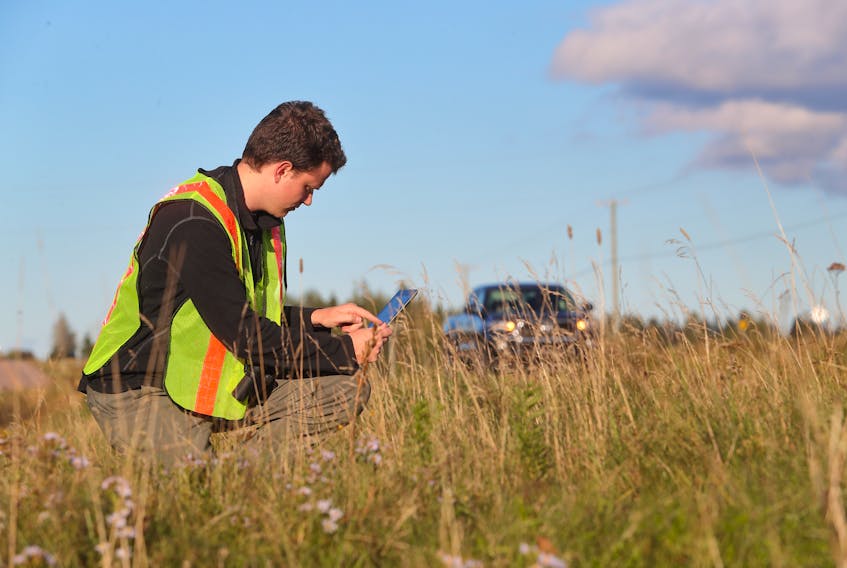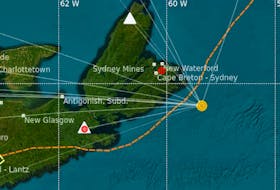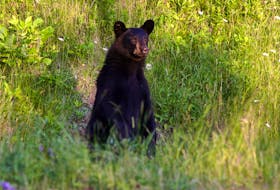AMHERST, N.S. — Highways on both sides of the Isthmus of Chignecto are dangerous to wildlife.
The first phase of the Nature Conservancy of Canada’s Wildpaths Maritimes Project that studied wildlife mortality within the isthmus, has been completed and three highways in particular were found to have the highest rates of mortality.
“We all know that animals and roads don’t mix and we wanted to find out where the problem spots were,” Paula Noel, the Nature Conservancy of Canada’s New Brunswick program director, said. “We found it was a very widespread problem, but in particular the corridor from Moncton to Shediac on the New Brunswick side and Highway 6 on the Nova Scotia side, more than any other roads, had much higher rates of wildlife killed.”
Based on research done over a 15-week period last summer, the project found the highest rates of wildlife mortality along Route 134 (the four-lane highway between Moncton and Shediac) and Highway 15 in New Brunswick and Highway 6 (from Amherst to Pugwash) in Nova Scotia.
Along with a high rate of mortality, the study found a high diversity of wildlife affected.
The most common animals killed by vehicles were: porcupine (116) and raccoon (113), followed by skunk (28) snowshoe hare (25), white tailed deer (eight), red fox (four), beaver (four), and black bear (three).
There were also many types of songbirds and amphibians killed.
“Those highways are quite a barrier,” Noel said. “You have a four-lane highway between Moncton and Shediac and some other secondary highways on both sides of the border that are also very busy,” she said. “The data confirms that we need to be looking at solutions to improve the situation for wildlife and for people. People certainly don’t want to be hitting wildlife on the road.”
Noel said wildlife mortality near highways is a given, but she admitted to being surprised with the number. On scale, she added, it would be higher than other parts of the country.
As for solutions, she said, NCC and other partners can work with transportation and infrastructure departments on both sides of the border to look at options in areas where there is a high rate of wildlife mortality.
“We can try and find solutions that as roads are maintained or renewed we can look what options there are to improve crossings for wildlife,” she said. “Maybe it could be something under the road.
“In New Brunswick, the department has done a good job when they’re renewing infrastructure on roads they are creating underpasses that are used for water. They’re also creating pathways along the water for wildlife to use – things like culverts under the roads.”
The project is a partnership between the Nature Conservancy of Canada and Dalhousie University as well as the New Brunswick Department of Transportation and Infrastructure and the Atlantic Wildlife Institute.
It began last May when Dalhousie University masters of environmental studies student Amelia Barnes began recording wildlife sightings along the border that is one of the region’s busiest transportation hubs as well as a critical area for conservation where the NCC and other organizations are working to conserve a wilderness corridor for wildlife.
People were also invited to record data via the iNaturalist app on their smartphones.
“This is a big step forward in terms of understanding how wildlife is moving through the Chignecto Isthmus and we are looking forward to learning more, as we enter a second phase of this effort,” Noel said. “We are working with many partners to find ways of making our highways safer for both wildlife and people.”
Noel said the NCC is seeking volunteer observers, or anyone with an interest in wildlife and living in the Sackville, N.B. and Amherst areas, to contact the organization for the next phase of the project.
Volunteers can contribute to the project by recording roadside wildlife observations using the iNaturalist app. The hope is the data collected can help identify trends that will help find solutions.
The Wildpaths Maritimes project is the latest step in the Nature Conservancy of Canada’s ongoing conservation work on the Chignecto Isthmus, one of the most critical habitats in the Maritimes.
The Nature Conservancy of Canada has protected more than 3,000 acres of land in the Isthmus to help secure a permanent wilderness corridor for wildlife in the region.
Noel said protecting habitat connectivity on the isthmus connecting Nova Scotia to New Brunswick is essential to allow healthy renewal of wildlife populations, especially with greater migration expected due to climate change.
If the narrow border area is further fragmented by roads and development, wildlife populations in Nova Scotia will decline over the long-term, due to isolation from other populations in eastern North America.
Anyone wishing to volunteer with the WildPaths Maritimes project is encouraged to contact the Nature Conservancy of Canada at 1-877-231-4400.
The WildPaths Maritimes project has received funding from the New Brunswick Wildlife Trust Fund and the Nova Scotia Habitat Conservation Fund.
Link to the project in iNaturalist: https://www.inaturalist.org/projects/wildpaths-maritimes









